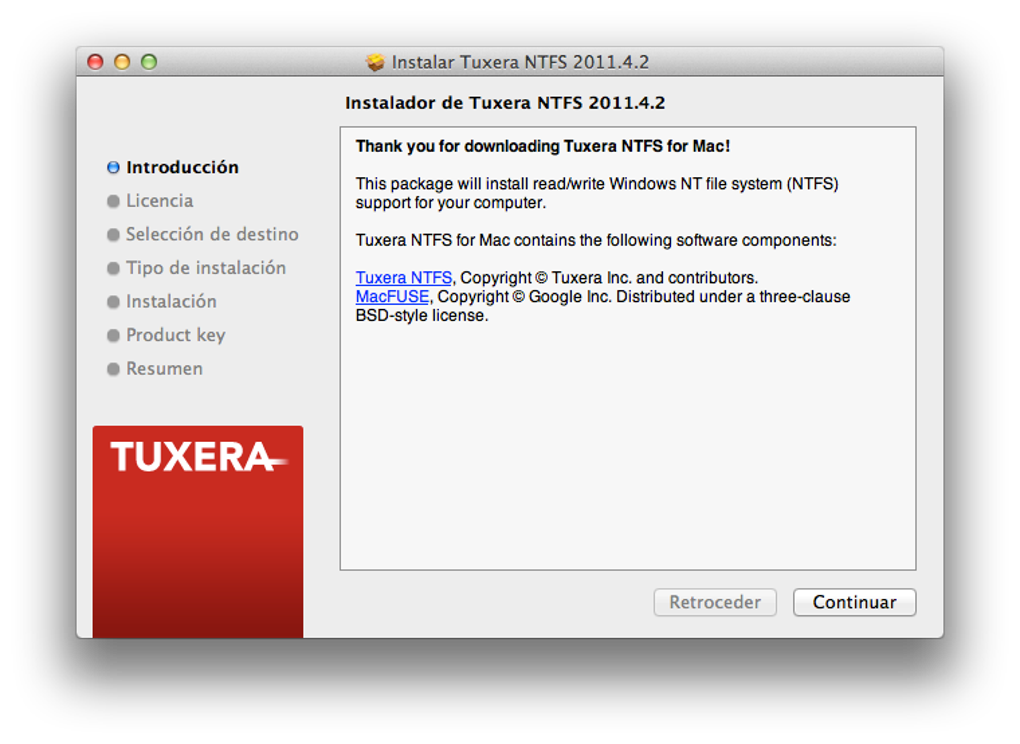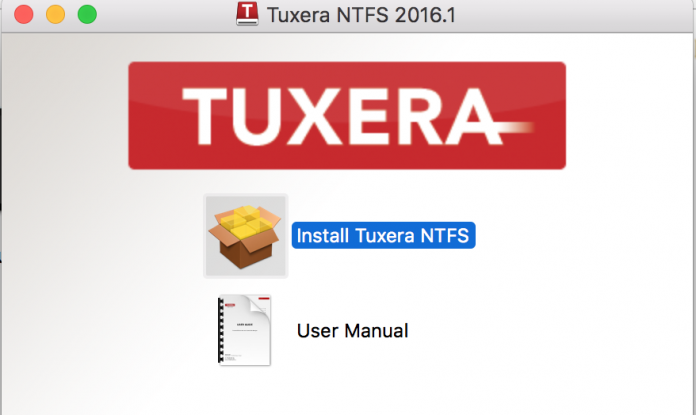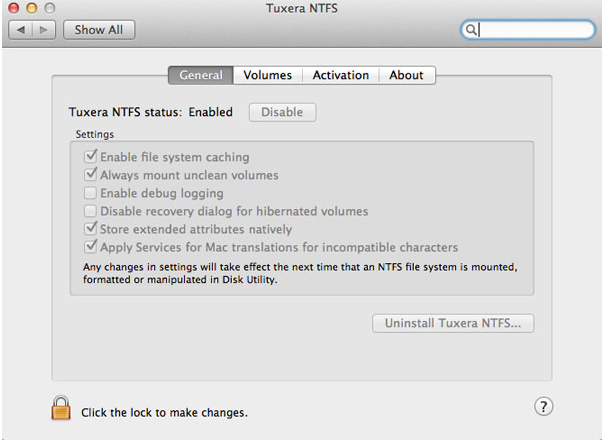
- #TUXERA NTFS FOR MAC 2014 HOW TO#
- #TUXERA NTFS FOR MAC 2014 MAC OS X#
- #TUXERA NTFS FOR MAC 2014 DRIVERS#
- #TUXERA NTFS FOR MAC 2014 UPDATE#
- #TUXERA NTFS FOR MAC 2014 FULL#
It would seem there are ways I can use a NTFS volume to achieve a balance between the features of a modern file system, Unix-style permissions - I might be able to set them - and read/write mount on all operating systems. This, and a variety of answers on the subject, indicate inconsistent support for this format at this point. The system goes into kernel panic and crashes disgracefully. I am unclear whether this has to do with the difficulties I had mounting it read/write on OSX, but after deleting a certain number of files using Linux, I was never able to mount the drive again on OSX. However, Windows doesn't allow you to specify a block size when formatting a UDF volume, and as a result, your logical block size might differ from the physical block size for the partition.
#TUXERA NTFS FOR MAC 2014 DRIVERS#
I use Ubuntu for development and do need Unix-style permissions.Īll former guides do not apply anymore: UDF drivers have evolved and all operating systems will accept a UDF partition, with more problems and instabilities than I can name. I am using OSX Yosemite, Ubuntu 14.10, and the Windows 10 technical preview for enterprises on a Mactel machine (Macmini 7,1). Script to format the disk properly: Perl script or Bash script Step 3: Enter the following command into. Step 2: Click on the Utilities menu at the top of the screen and choose Terminal. If you succeed, you will enter the Recovery menu. Hold the buttons before you hear the startup chime and until you see a progress bar. Supports large files, UNIX permissions, Unicode filenames, symlinks, hardlinks, etc. Step 1: Power down and restart your Mac while holding the Cmd+R keys on your keyboard.Can be used read-only in Windows XP, and be used after a command line mount in Linux 2.6.0+.
#TUXERA NTFS FOR MAC 2014 MAC OS X#
Mounts automatically read-write in Linux 2.6.30+, Mac OS X 10.5+, Windows Vista+.

Some testing shows that this really works on Linux, Windows and Mac OS X: The nice thing is that UDF does not (I suppose deliberately) use the first few kilobytes of the partition or disk it is placed on, so this place can really be used to store a legacy partition table, referring to a partition that spans the whole disk. Partition editor programs seem to refuse to create such a table, but at least recent Linux and Windows kernels don’t seem to bother. However, it seems possible to construct a partition table whose first partition starts at sector 0, so the result is a partition which contains the partition table itself. Typically, the first partition specified will start some kilobytes further. This master boot record is stored in the first sector on disk, sector 0. Rather surprisingly, there is a solution which works for both: having the disk partitioned and unpartitioned at the same time.ĭOS partition tables are stored in bytes 446-510 of the master boot record.

#TUXERA NTFS FOR MAC 2014 FULL#
On the other side, UDF only works in OS X when it is used on a full disk (unpartitioned). Mac OS X 10.5 supports UDF fully up to UDF 2.01, but only when used on a full disk, so not partitioned.Īs explained above, for USB harddisks, Windows requires the disk to be partitioned. Linux 2.6.30 and up supports UDF fully at least up to version 2.5. Windows 7 have full support up to UDF v2.6, but the UDF block size must match the block size of the underlying device (which for USB-sticks and most disks is 512 bytes "advanced format" disks are 4096 bytes). Here are his findings (used to be there, now offline):
#TUXERA NTFS FOR MAC 2014 HOW TO#
Note that this feature has been introduced in Tuxera NTFS for Mac 2015.Someone did some research into how to format a flash drive with udf so it can be used on as many operating systems as possible. If the latest version is newer than the version that is currently installed, click on the “Update Tuxera NTFS for Mac” button in order to update.Īfter upgrading, it is recommended that you restart your system. The “Updates” tab shows the current installed version in the computer, and the latest version available.
#TUXERA NTFS FOR MAC 2014 UPDATE#
If an update for the software is found, a dialog notifying that a new version of Tuxera NTFS for Mac is available will be displayed. This preference pane is present in System Preferences. Tuxera NTFS for Mac includes a preference pane for managing its settings and performing updates of the software. To activate the newly installed version of Tuxera NTFS for You only need to unmount your NTFS file systems and remount them in Disk Utility Mac OS X cache certain data from the file system bundle. Installation, since it needs to place files in protected systemĪfter you have installed the package, you are recommended but Provide the password of an administrator of your computer during the Which will guide you through installing Tuxera NTFS for Mac. “Install Tuxera NTFS” opens the package installer, You will see two icons inside the disk image: “Install Tuxera

Is delivered as a disk image (.dmg file). Tuxera NTFS for Mac, like most software on the Mac platform, Installing any other program, as it uses the standard Mac OS X Installer package Installing Tuxera NTFS for Mac is not more complicated than


 0 kommentar(er)
0 kommentar(er)
